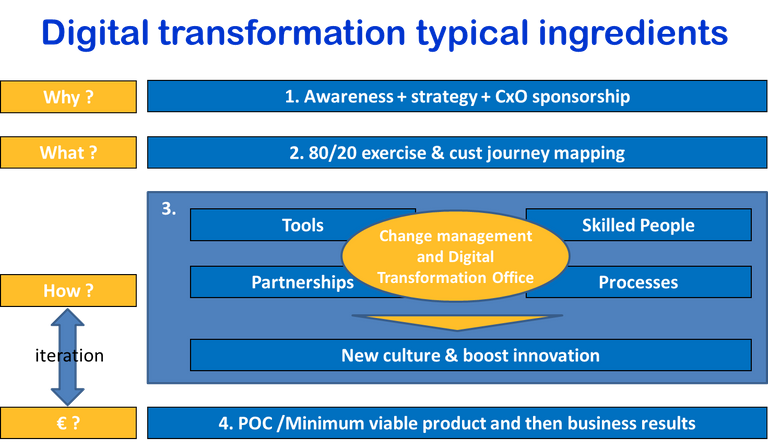
For a business to succeed, you must embed DX
into business. The strategy for the use of information technology (IT) is no longer something that can be delegated as the sole concern of the IT department. It must be firmly rooted in the business strategic plan (strategic plan). Many businesses are now embracing the objective of transforming their operations through the effective use of technology. This can only be done effectively when both IT and service heads understand what it means for existing architecture, operating processes, staff skills, supplier management, governance, and organizational culture.
“Given the growing importance of technology in every business, technology organizations must have clear strategic direction and priorities that are closely linked to the business strategy,” says Brad Strock, CIO of PayPal.
The business view of IT must evolve beyond creating a short list of technologies to implement. The IT budget is not about buying the latest “toys for the boys”. Rather, it is an assessment of the changes and investment required to achieve business goals. This is ‘digital transformation’ (DX), best described as a complete change to the nature or manner of business operations through the application of digital technology. The change is based on data-driven innovation that makes the best use of technology.
The DX journey follows the tried and tested path of traditional change projects which set and communicate a clear vision that is owned by the leadership of the organization. The innovation is then derived from the analysis of data which is used to set the requirements and scope of the change required. Change teams then use this to identify potential options through collaboration with technology suppliers and vendors. It is essential to ensure the operational and strategic requirements of the business are fully addressed through the solution as the change needs to deliver quick wins along with the overall objective of the project/program. The rate of change must not exceed the readiness for change assessment of host organization, else the changes will not be sustainable as planned.
Adopting completely new technology is usually disruptive as it often requires a complete change in skills and operational processes. However, there are often areas of work where existing practices just need to be tweaked to facilitate the necessary changes to the overall system. A transformation partner is often a solution to ensuring adequately skilled resources are available to deliver the new operations.
The hardest part of the journey of transformation is knowing when we have reached our destination. DX needs a roadmap which sets the milestones, for the journey and measures the business benefits from each stage. Delivering DX must be part of the business strategy for organizations to improve their competitive edge and remain effective in meeting the needs of their customers.
From https://www.linkedin.com/pulse/digital-transformation-dx-business-strategy-jide-olagundoye/
Hi! I am a robot. I just upvoted you! I found similar content that readers might be interested in:
https://www.cybrary.it/0p3n/digital-transformations-need-part-business-strategy/